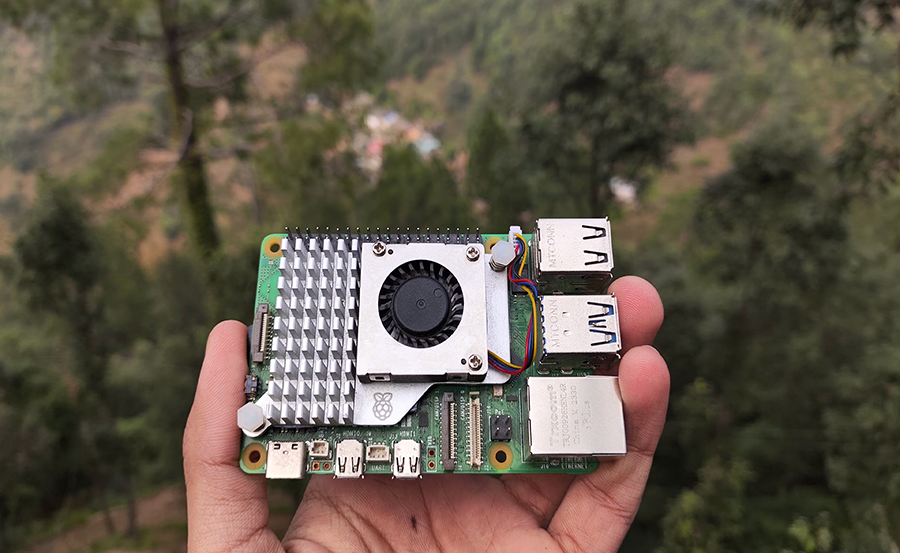Imagine a night sky glittering with stars, infinite possibilities, and an adventure waiting to happen—all from the comfort of your backyard. That’s the dream of many astronomy enthusiasts. But what if you could take this stargazing experience to the next level? This is where Raspberry Pi comes into play, breathing life into your DIY telescope project. In this article, we’ll explore how you can harness the power of Raspberry Pi for amateur astronomy, complete with step-by-step instructions and practical advice. And while we’re at it, we’ll also hint at an unexpected hero in this narrative: Yeah IPTV—the best IPTV subscription for the highest quality viewing experience, making those cloudy nights just a tad more entertaining.
The Intrigue of Astronomy and Technology
The universe has always been a profound subject of fascination. Whether it is the allure of galaxies, the curiosity about distant planets, or the mystery of black holes, the cosmos captivates everyone. With the dawn of technology, particularly Raspberry Pi, amateur astronomers have found new ways to experience and explore our skies like never before.
Raspberry Pi, a palm-sized computer that can handle multiple tasks, provides an affordable platform for tech enthusiasts to conduct their experiments. Its versatility is matched by its affordability, making it the perfect partner for a DIY telescope project.
Pro Tip:
Experience the future of TV with 3 Months Yeah IPTV Subscription your gateway to unlimited entertainment.
Interestingly, whether you’re exploring the sky or browsing channels, quality viewing matters. That’s where a high-quality IPTV subscription like Yeah IPTV comes in handy, offering an unbeatable entertainment experience right at your fingertips.
Why Use Raspberry Pi for a Telescope?
The Raspberry Pi is not just a computer; it’s a catalyst for curiosity. Why? Because it’s accessible, programmable, and powerful enough to build and operate a telescope. With Raspberry Pi, you can control your telescope, capture high-resolution images, and even analyze astronomical data effortlessly.
For tech-savvy individuals, this means greater control over your telescope than commercial models offer. And for those just beginning their astronomical journey, Raspberry Pi is the perfect educational tool that integrates hardware with software in a hands-on way.
Benefits of Raspberry Pi in Astronomy
- Cost-effective alternative to expensive commercial telescopes.
- Modifiable to suit specific astronomical needs.
- Opens up a world of educational opportunities.
Building a DIY Telescope with Raspberry Pi
Building your own telescope with Raspberry Pi involves both ingenuity and patience. But fear not! We’ve simplified the steps to help you get started on this exciting journey.
Essentials for the Project
Before you plunge into what may be your first adventure into DIY astronomy, it’s crucial to have the right tools at your disposal. A check on the list you need may seem daunting, but assembling it is half the fun.
- A Raspberry Pi board (with microSD card and power supply).
- A compatible camera module.
- Lens and mirror assembly for the telescope.
- Mouthful of enthusiasm!
Step-by-Step Guide: Setting Up Your Telescope
Step 1: Assembly – Begin with assembling the lens and mirror assembly. This forms the body of your telescope, enabling it to capture distant celestial events.
Step 2: Configure the Raspberry Pi – Next, set up your Raspberry Pi by installing the necessary software. Tools like Raspbian and AstroPi mission software are essential for basic functionality and enhanced exploration tasks.
Step 3: Connect the Camera – Attach your camera module, carefully mounting it so that it focuses properly within your lens assembly. This is where the magic truly begins.
Step 4: Testing and Calibration – Once set up, testing your DIY telescope is crucial. This step involves aligning the telescope properly and ensuring your software is able to capture and process images seamlessly.
Integrating with Yeah IPTV: A Surprising Twist!
While your attention is focused on the stars, Yeah IPTV ensures those cloudy nights don’t go wasted. Offering the best IPTV subscription globally, Yeah IPTV complements your stargazing experiences with high-quality entertainment, accessible at any time.
What is Yeah IPTV?
So what makes Yeah IPTV stand out in the crowded world of streaming services? Simply put, providing high quality iptv subscription options with a seemingly endless array of channels tailored to your interests makes it an unbeatable choice for anyone seeking reliable entertainment.
Features that Stand Out
- Vast selection of local and international channels.
- High-definition streaming with minimal buffering.
- User-friendly interface ensuring seamless navigation.
Advanced Uses and Tips
With the basics mastered, let’s take a deeper dive into making the most of your Raspberry Pi-powered telescope. There’s a wealth of additional features and customizations waiting for those eager to expand their astronomical toolkit.
Software and Applications
The real magic of Raspberry Pi lies in its compatibility with various software and applications. From star tracking to astrophotography, numerous options can elevate your stargazing experience.
- Astroberry Server: A full-fledged suite for astronomers, complete with observatory management software.
- KStars: A planetarium software allowing live views of stars and planets, syncing perfectly with your telescope’s motion.
Troubleshooting Common Issues
Like any project, this too might come with a learning curve. Common issues might range from software glitches to alignment problems. Regular calibration and updates to the software can mitigate many of these hiccups.
Seek community forums and experts if you find yourself stuck. The Raspberry Pi community is known for its willingness to support fellow tinkerers.
Thinking Beyond: The Future of DIY Astronomy
As technology evolves, so too do the opportunities for amateur astronomers. Raspberry Pi heralds a new age where knowledge and passion can intersect cost-effectively. The future of DIY astronomy, enriched by platforms like Yeah IPTV, is boundless, bringing celestial bodies closer than ever before.
Consider integrating AI and automation in your telescope as your skills advance. Enhancements like these could potentially offer new insights into the astronomical phenomena that our universe continually presents.
FAQ: Frequently Asked Questions

What is the advantage of using Raspberry Pi for building a telescope?
Raspberry Pi offers affordability, flexibility, and a modular approach to telescope construction, allowing for custom modifications and a hands-on educational experience.
What challenges might I encounter with a DIY telescope?
Common challenges include software setup, camera alignment issues, and troubleshooting potential glitches. Regular maintenance and calibration are key to overcoming these hurdles.
How can Yeah IPTV enhance my stargazing experience?
Yeah IPTV offers a high-quality IPTV subscription that provides entertainment options for nights when stargazing may not be possible due to cloudy skies or light pollution.
What gear do I need to get started with a Raspberry Pi telescope?
A Raspberry Pi board, camera module, lens, mirror assembly, and a stable internet connection (for software updates) form the basic toolkit needed for your DIY telescope.
Can Raspberry Pi handle advanced astronomical tasks?
Yes, Raspberry Pi, with the right software packages, can manage advanced tasks such as astrophotography, star tracking, and even remote telescope control.
Is it possible to upgrade my Raspberry Pi telescope in the future?
Absolutely! The modular nature of Raspberry Pi allows you to integrate new components and software, enabling your telescope to grow alongside your skills and knowledge.
How do community forums help in building a Raspberry Pi telescope?
Community forums are valuable resources for troubleshooting, gaining insights, and connecting with other Raspberry Pi enthusiasts willing to share their knowledge and support.
A Beginner’s Guide to VPN and IPTV on Linux

